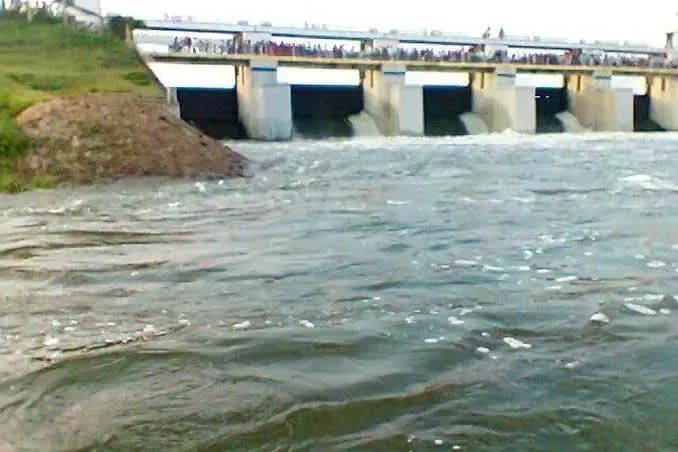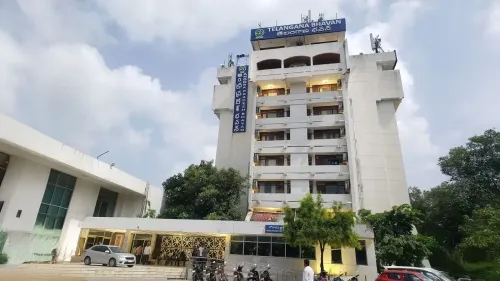Has Heavy Rain Resurrected Chennai's Catchment Areas? Water Discharge from Three Major Reservoirs Commenced

Synopsis
Key Takeaways
- Heavy rainfall has led to precautionary water discharge from three major reservoirs in Chennai.
- The Tamil Nadu Water Resources Department is ensuring safe storage levels amid ongoing rainfall.
- Approximately 5,400 cusecs of water has been released from key reservoirs.
- Residents are advised to stay vigilant due to possible water level changes.
- The forecast indicates continued heavy rainfall until November 21.
Chennai, Nov 17 (NationPress) Following a resurgence of significant rainfall across Tamil Nadu, the state’s catchment regions have experienced a considerable influx of water over the last 48 hours. In response, the Tamil Nadu Water Resources Department (WRD) has initiated a precautionary release of excess water from three major reservoirs that are critical for Chennai's drinking water supply.
Officials indicated that this action was necessary to maintain safe storage levels, as forecasts predict continued rainfall in the coming days.
The WRD reported that approximately 5,400 cusecs of surplus water has been discharged from the Poondi, Chembarambakkam, and Puzhal lakes. These essential reservoirs have been seeing increased inflows due to heavy downpours linked to a low-pressure system situated over the Southwest Bay of Bengal.
At Chembarambakkam Lake, one of the largest water bodies in the city, the water release was doubled from 600 cusecs to 1,200 cusecs early Monday morning, as water levels surged rapidly.
WRD officials noted that inflows from upstream sources have been strong since Sunday evening, necessitating adjustments in reservoir management to create buffer space for potential additional rainfall.
Similarly, the Poondi reservoir, a significant contributor to the city’s daily drinking water, increased its discharge from 2,500 cusecs to 3,000 cusecs. Engineers observed that catchments feeding Poondi had received substantial rainfall overnight, resulting in a quick rise in water levels.
Puzhal Lake, commonly referred to as Red Hills reservoir, continues to release 1,200 cusecs, a precautionary measure to prevent overflow as inflows intensify.
In addition to these three reservoirs, other vital lakes such as Cholavaram, Kannankottai–Thervoy Kandigai, and Veeranam are also integral to Chennai's extensive drinking water system, and are under close surveillance.
The Regional Meteorological Centre (RMC) in Chennai has indicated that heavy to very heavy rainfall is anticipated until November 21 due to a persistent low-pressure area over the Southwest Bay of Bengal near the Sri Lankan coastline.
This system, projected to move west-northwestward, may enhance rainfall activity across coastal and northern districts. Disaster management teams and local administrations have been notified to remain in a state of preparedness as further regulation of water discharge from reservoirs may be necessary based on rainfall intensity.
The WRD is advising residents living near overflow canals and downstream areas to exercise caution, as water levels are expected to fluctuate in the upcoming days.









